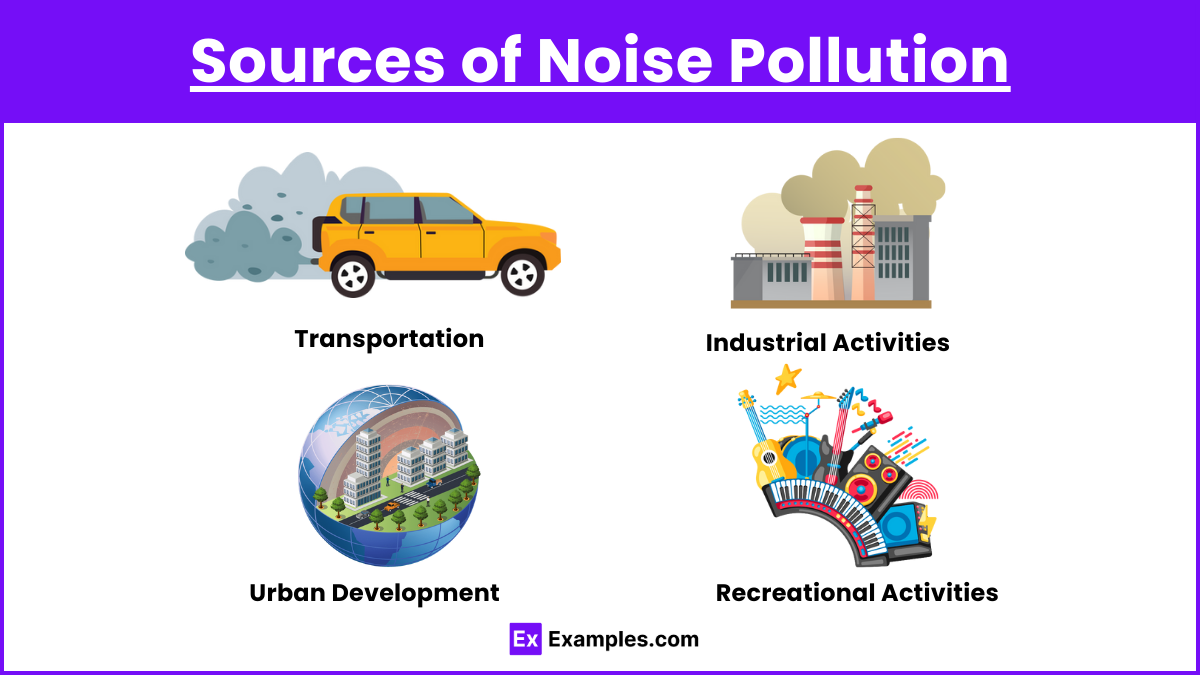Have you ever been in a quiet room when suddenly, a mysterious rumbling noise disrupts your peace? It's a curious phenomenon that can spark both concern and intrigue. Rumbling noises can come from a variety of sources, and understanding them can help alleviate any anxiety they might cause. In this post, we’ll delve into what these sounds could mean and where they might be coming from. So, let’s get to the bottom of these enigmatic rumbles!
Common Sources of Rumbling Noises

Rumbling noises can originate from numerous places, each with its own unique characteristics. Here are some of the most common sources:
- Mechanical Equipment: Often, machinery such as HVAC systems, generators, or large appliances can produce rumbling sounds. For example, an old air conditioning unit may make a low rumble when it’s struggling to function efficiently.
- Natural Phenomena: Thunder is perhaps the most well-known natural source of rumbling. The sound occurs when the shockwave from a lightning strike travels through the atmosphere. Other natural sources include:
- Earthquakes: These can create low-frequency rumbles felt miles away from the epicenter.
- Volcanic Activity: Before an eruption, you might hear rumbling from the ground due to shifting magma.
- Vehicles: Heavy vehicles, particularly trucks and buses, generate rumbling sounds as they drive over bumps or uneven surfaces. You might feel it more than hear it, especially when close by.
- Construction Activities: If you live near a construction site, the rumbling of heavy machinery like bulldozers and excavators can be a common annoyance. These machines produce a variety of sounds, often resonating through the ground.
- Pipes and Plumbing: Sometimes, the plumbing in your home can generate rumbling noises when water is running through old or poorly secured pipes. This phenomenon is often referred to as "water hammer" and can be quite startling!
Identifying the source of rumbling noises can help you determine whether they’re harmless or if they indicate a need for attention. If a noise seems unusual or persistent, it might be worth investigating further to avoid potential issues.
Also Read This: Why Does My Car Rumble
3. Natural Causes of Rumbling Sounds
Rumbling noises can often be traced back to natural phenomena that occur around us. Understanding these sounds can help demystify the world we live in and even prepare us for certain events. Let’s dive into some of the most common natural causes of these intriguing sounds.
1. Thunder: One of the most recognizable natural sources of rumbling is thunder. It occurs when lightning heats the air rapidly, causing it to expand. This rapid expansion creates shock waves that we hear as a low rumble. The distance from the strike can affect the sound; the closer you are, the louder and sharper it sounds, while further away, it’s often a softer rumble.
2. Earthquakes: Earthquakes can produce a series of rumbling noises as tectonic plates shift beneath the Earth’s surface. These sounds can range from a low rumble to a loud roar, depending on the magnitude of the quake. The sound you hear is essentially the vibrations of the Earth traveling through the ground and into your ears.
3. Avalanches: In mountainous regions, avalanches can create a thunderous rumble as snow and ice tumble down slopes. This sound can be both awe-inspiring and terrifying, echoing through valleys. The force of the falling snow creates a unique sound that can be felt as much as it is heard.
4. Volcanic Activity: Volcanic eruptions often come with a loud rumbling sound. As magma moves through the Earth and pressure builds up, it can lead to explosive eruptions or even just a series of rumbles. Depending on the type of eruption, these sounds can range from low, throaty growls to violent explosions.
5. Animal Sounds: Some animals also contribute to the rumbling noises we hear. For example, certain species of elephants communicate in low-frequency sounds that can travel long distances. While these aren’t necessarily what we think of when we hear rumbling, it’s fascinating to consider the natural world and how even the animal kingdom adds to the symphony of sounds around us.
Also Read This: When Is the Next Redneck Rumble in Lebanon, Tennessee? Event Information
4. Man-Made Causes of Rumbling Noises
Just as nature has its share of rumbling sounds, so too does human activity contribute significantly to the auditory landscape. Man-made noises can often be more disruptive, especially in urban environments. Let’s explore some of the key sources.
1. Construction Sites: If you live near a construction site, you’re likely familiar with the persistent rumble of heavy machinery. Excavators, bulldozers, and jackhammers can create a cacophony of sounds. The rumbling often arises from the vibrations of equipment and the movement of materials, shaking the ground and producing low-frequency noises.
2. Traffic: In bustling cities, the sound of traffic can be a constant background noise. The rumble of large trucks and buses, combined with the revving of engines and the hum of tires on pavement, contributes to the overall soundscape. Interestingly, certain types of roads and pavement can amplify these sounds, leading to a more pronounced rumble.
3. Trains: Trains, particularly freight trains, can create deep, resonant rumbling noises as they pass by. The combination of wheels on tracks, the movement of heavy cargo, and the sound of engines contribute to the experience. If you live near train tracks, you might even feel the vibrations in the ground!
4. Industrial Activities: Factories and industrial plants can also be significant sources of rumbling sounds. Machinery, production lines, and the movement of goods can produce continuous low-frequency noises. Depending on the type of industry, this can range from a soft hum to a noticeable rumble that permeates the surrounding area.
5. Explosions: Lastly, controlled explosions for demolition or mining can produce intense rumbling sounds. These events create shock waves that can be felt and heard miles away. While they serve specific purposes, they certainly add a dramatic flair to the list of man-made noise sources!
In summary, whether natural or man-made, rumbling noises form an integral part of our auditory experience. By understanding their sources, we can appreciate the sounds around us even more!
Also Read This: Is Rumble Free to Use? Understanding the Platform’s Costs
5. How to Identify the Source of a Rumbling Noise
Identifying the source of a rumbling noise can sometimes feel like a detective mission. But don’t worry! With a bit of patience and some practical steps, you can track down the culprit. Here’s how:
- Listen Carefully: Start by paying attention to when the rumbling occurs. Is it constant, or does it happen at certain times? For instance, if you notice it primarily during rain, it might be related to weather conditions.
- Isolate the Sound: Move around your home or workplace and note where the sound seems loudest. This can help narrow down potential sources. Using a listening device or smartphone app can also help you pinpoint the sound’s origin.
- Check Appliances and Equipment: Many rumbling sounds come from household appliances. For example, if your washing machine is rumbling, it could be an imbalance in the load. Similarly, a furnace might make a rumbling noise if there’s a problem with the motor.
- Inspect the Environment: Sometimes, external factors contribute to rumbling noises. Check outside for construction work, heavy traffic, or even nearby trains that might be causing vibrations. The ground can transmit these sounds into your home.
- Consider Structural Issues: If the noise persists, it might relate to structural issues in your home, such as settling foundations or loose ductwork. In such cases, consulting a professional is wise.
Don't forget to document your findings! Keeping a log of when the noise occurs and any patterns you notice can be particularly useful if you need to call in experts later on. This process may take time, but being methodical can lead you directly to the source.
Also Read This: Who Won the Women's Royal Rumble in 2022?
6. Impact of Rumbling Noises on Daily Life
Rumbling noises might seem like a minor annoyance, but their impact on daily life can be significant. Let’s explore how they can affect various aspects of our lives:
- Sleep Disruption: One of the most immediate effects of rumbling noises is on sleep quality. Imagine being jolted awake by a low-frequency rumble at 2 AM! Chronic sleep disruption can lead to fatigue, irritability, and decreased productivity during the day.
- Reduced Focus: In workspaces or study environments, constant rumbling can distract you from tasks. It’s hard to concentrate on a report or a book when there’s a persistent noise in the background. This can lead to increased stress and decreased performance.
- Emotional Well-Being: Over time, exposure to bothersome noises can lead to frustration and anxiety. It can create a sense of unease, making your home feel less like a sanctuary. Many people find that persistent noise can affect their mood and overall mental health.
- Social Interactions: If you’re hosting a gathering or simply enjoying time with family, rumbling noises can be intrusive. It can make conversations difficult and diminish the enjoyment of shared moments.
- Property Value Concerns: If a home has a reputation for persistent rumbling noises, it can impact its resale value. Future buyers may be deterred by the thought of living with such disturbances.
The good news is that there are often ways to mitigate these impacts. Soundproofing techniques, using white noise machines, or simply addressing the source of the noise can help restore peace to your life. Understanding the effects of rumbling noises empowers you to take action for a quieter, more comfortable living environment.
Also Read This: How Does Rumble Pay? A Breakdown of the Payment System
7. What to Do if You Encounter Rumbling Noises
Encountering rumbling noises can be unsettling, whether they come from your home, your car, or even the environment around you. The first step in addressing these noises is to stay calm and assess the situation. Here’s a practical approach to tackle those unexpected sounds:
1. Identify the Source: Start by determining where the noise is coming from. Is it inside your home, perhaps from an appliance, or is it outside, maybe from construction or nature? Try to pinpoint the location, as this can help you decide your next steps.
2. Investigate Common Culprits: Different sources can lead to rumbling sounds. Here are a few potential causes:
- Appliances (like your refrigerator or washing machine)
- HVAC systems
- Vehicles (engine noise or exhaust issues)
- Natural phenomena (thunder, earthquakes)
3. Listen for Patterns: Pay attention to when the noises occur. Are they consistent or sporadic? Do they happen at specific times of the day or under certain conditions? This information can help you narrow down the issue.
4. Document Your Findings: Keep a record of when you hear the noises and any other relevant details. This can be particularly helpful if you need to consult with a professional later on.
5. Consider Professional Help: If you can’t identify the source, or if the noise is coming from your vehicle or home systems and you suspect an issue, it might be time to call in an expert. A mechanic can check your car, while a technician can help with home systems.
6. Safety First: If the noise sounds alarming (like a rumbling that could indicate a gas leak or structural issue), prioritize safety. Evacuate the area and contact the appropriate authorities immediately.
Ultimately, staying calm and taking a systematic approach can help you effectively manage rumbling noises and alleviate any distress they cause.
8. Conclusion and Final Thoughts
Rumbling noises can be perplexing, but understanding their possible sources and causes can empower you to address them effectively. From natural occurrences to mechanical failures, recognizing the context of these sounds is crucial.
Takeaways:
- Stay calm and investigate calmly.
- Document noise occurrences for clarity.
- Don’t hesitate to seek professional assistance if needed.
Remember, noises are often signals that something needs attention, but they don’t have to be a source of panic. With the right approach, you’ll be able to tackle the mystery of rumbling sounds. Whether it’s just an old appliance or a more serious issue, being proactive will not only give you peace of mind but also ensure your safety.
So, the next time you hear a rumbling noise, take a moment to assess, take action, and remember that you’re not alone in experiencing these curious sounds. Happy investigating!
 admin
admin








